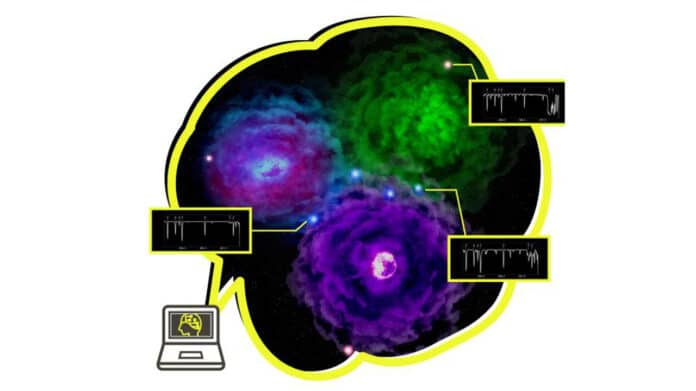The first stars initiated the crucial transition from a primordial Universe to a Universe enriched with heavier elements. These stars formed in pristine minihalos around redshift 6–30.
According to astronomers, these stars were metals that did not contain heavy elements. The next generation of stars contained only a small amount of heavy elements produced by the first stars. Understanding the universe in its infancy requires researchers to study these metal-poor stars.
In a new study, a team of scientists used machine learning and state-of-the-art supernova nucleosynthesis to observe these first stars. They found that most observed second-generation stars in the universe were enriched by multiple supernovae.
Using AI, the team analyzed elemental abundances in more than 450 highly metal-poor stars observed to date. They discovered that 68% of the observed highly metal-poor stars had a chemical fingerprint consistent with enrichment by several prior supernovae based on the newly built supervised machine learning technique trained on theoretical supernova nucleosynthesis models.
The team’s results give the first quantitative constraint based on observations on the multiplicity of the first stars.
Lead author Hartwig said, “Multiplicity of the first stars were only predicted from numerical simulations so far, and there was no way to observationally examine the theoretical prediction until now. Our result suggests that most first stars formed in small clusters so that multiple of their supernovae can contribute to the metal enrichment of the early interstellar medium.”
“Our new algorithm provides an excellent tool to interpret the big data we will have in the next decade from ongoing and future astronomical surveys across the world.“
Visiting Associate Scientist and National Astronomical Observatory of Japan, Assistant Professor Miho Ishigaki said, “At the moment, the available data of old stars are the tip of the iceberg within the solar neighborhood. The Prime Focus Spectrograph, a cutting-edge multi-object spectrograph on the Subaru Telescope developed by the international collaboration led by Kavli IPMU, is the best instrument to discover ancient stars in the outer regions of the Milky Way far beyond the solar neighborhood.”
Visiting Senior Scientist and the University of Hertfordshire, Professor Chiaki Kobayashi said, “The new algorithm invented in this study opens the door to make the most of diverse chemical fingerprints in metal-poor stars discovered by the Prime Focus Spectrograph. The theory of the first stars tells us that the first stars should be more massive than the Sun. The natural expectation was that the first star was born in a gas cloud containing a mass million times more than the Sun.”
“However, our new finding strongly suggests that the first stars were not born alone but instead formed as a part of a star cluster or a binary or multiple star system. This also means that we can expect gravitational waves from the first binary stars soon after the Big Bang, which could be detected in future missions in space or on the Moon.”
Journal Reference:
- Tilman Hartwig et al. Machine Learning Detects Multiplicity of the First Stars in Stellar Archaeology Data. The Astrophysical Journal. DOI 10.3847/1538-4357/acbcc6
